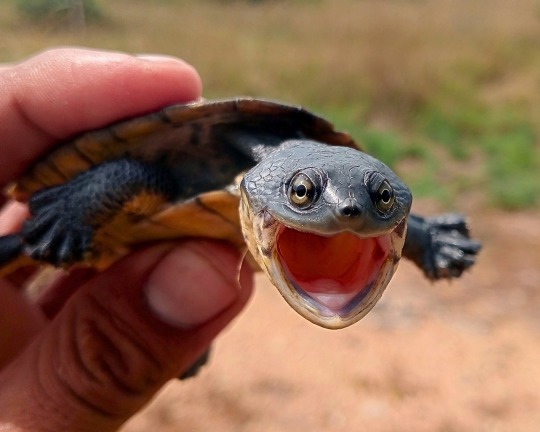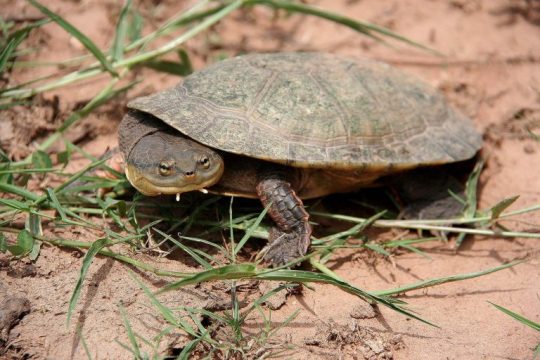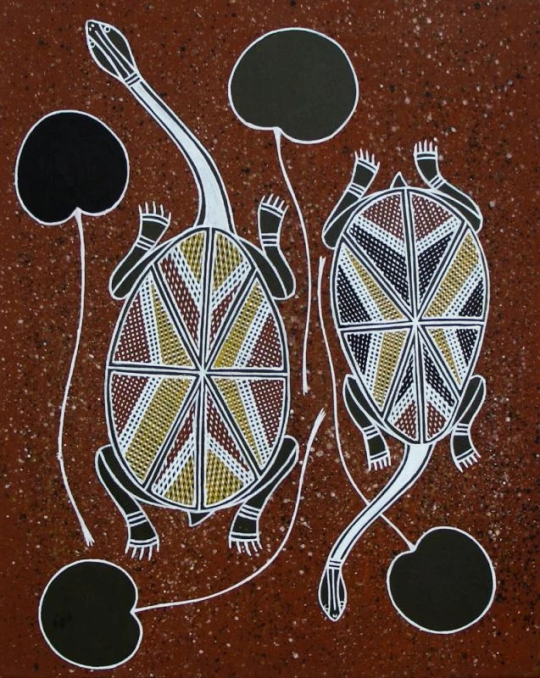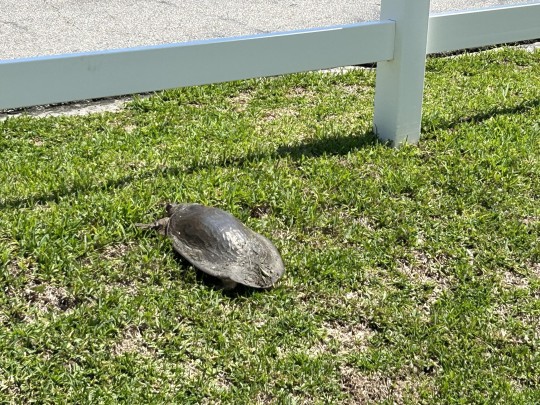#turtle neck animal
Explore tagged Tumblr posts
Text



Dahl’s Toad-Headed Turtles (Mesoclemmys dahli), family Chelidae, endemic to northern Colombia
CRITICALLY ENDANGERED.
Endangered due to habitat degradation and fragmentation.
photographs: Yeiner Vega (juveniles) and Luis Rojas
#turtle#toad headed turtle#side necked turtle#mesoclemmys#chelidae#reptile#herpetology#animals#nature#south america
811 notes
·
View notes
Text



Have At the Helmeted Turtle
The African helmeted turtle, or also known as the marsh terrapin, the crocodile turtle, or more simply the helmeted turtle (Pelomedua subrufa) is a species of side-necked terrapin found throughout sub-Saharan Africa, from Sudan all the way to South Africa. They occur in a range of habitats including savannahs, semi-desert scrubland, and near freshwater rivers, lakes and wetlands. Though P. subrufa typically resides near water, individuals can travel long distances over land and can reside in extremely small, degraded bodies of water.
Helmeted turtles are rather small, with an average shell length of 20 cm (7.9 in) and a weight of up to 3 kg (6.6 lbs); males are slightly larger than females. They are plainly colored, with a black or brown unmarked shell and a grey head. Both the underbelly and the plastron (underside shell) are yellow. This helps P. subrufa to blend in with its surroundings, providing an extra layer of protection against predators and camouflage with which to ambush potential prey.
Crocodile turtles are omnivorous, eating just about anything they come across. The bulk of their diet comes from carrion, and they will also readily ambush frogs, fish, crabs, mollusks, birds, and small mammals, and are known to hunt and feed in groups that produce a 'feeding frenzy' similar to crocodiles. They will also feed on aquatic vegetation and roots. Adults have also been noted for feeding in the ticks of warthogs, buffalo, and rhinos, which may seek them out at watering holes in order to be rid of parasites. Though no predators have been recorded, marsh turtles have an anti-predatory response of releasing a foul-smelling fluid from their underarms when picked up.
Throughout most of their range, mating occurs in the rainy season, which may vary in timing depending on position relative to the equator. Males seek out females, sometimes traveling long distances to do so; once he has found a potential mate, the male will seduce her by bobbing his head. After mating, the female lays anywhere from 10–30 eggs in a nest close to water. The incubation period can last anywhere from three to six months, depending on location and the duration of the rainy season. Individuals reach full maturity at around four years old, and they can live for over 50 years in the wild.
Conservation status: African helmeted turtles are currently classified as Least Concern by the IUCN; the population is large and widespread. Their primary threat is habitat loss and degredation of the water bodies in which they reside.
Photos
Charles J. Sharp
Charlotte Kirchner
Marius Burger
#african helmeted turtle#Testudines#Pelomedusidae#side-necked terrapins#turtles#reptiles#grasslands#grassland reptiles#freshwater fauna#freshwater reptiles#lakes#lake reptiles#wetlands#wetland reptiles#africa#sub-saharan africa#animal facts#biology#zoology#ecology
92 notes
·
View notes
Text






Some of the wildlife from my walk this morning. Beautiful spring day.
#red winged blackbird#canada goose#trumpeter swan#ring necked duck#muskrat#wildlife pictures#nature#aurora#ontario#turtle island#birds of tumblr#wild animals#animal photography#wildlife photography#birdwatching#wild birds#birds of north america
28 notes
·
View notes
Text


For #TurtleTuesday + #TwoForTuesday, two different versions of Two Long Neck Turtles, 2019, by Reuben Balarda Manakgu (Mandjuringunj clan, West Arhnem Land, b.1965) Synthetic polymer paint on canvas, 26 x 43cm & 40 x 50 cm
#animals in art#Aboriginal art#Indigenous art#Australian art#contemporary art#Rarrk#painting#turtle#turtles#long neck turtles#pair#Reuben Balarda Manakgu
50 notes
·
View notes
Text
The instant attraction that I felt when I first landed my eyes on Kota Sako. Like, my attention had been on Hayate the whole time before Sako showed up but I knew eyepatch guy will just be a temporary obsession until I found the true man.
#turtle neck turtle neck turtle neck turtle neck turtle neck turntle neck#too bad hes barely even considered a side character#2.0 kenma needs more screentime#did i mention manga turned out to be more light-hearted than what i was expecting?#wholly expected it to be another jjk#nvm maybe its just the gojo umemiya edits thats been popping in my fyp recently#kota sako#suo hayato#hajime umemiya#satoru gojo#jjk#wind breaker#jujutsu kaisen#anime and manga#sonetto yaps#all eyes on palestine#from the river to the sea palestine will be free#all eyes on rafah
21 notes
·
View notes
Text
Idk wtf is happening with Rnm anime (what with the amount of teasers but no actual releasing date when its june already) but i see long hair Rick and i want more of him please 👀

26 notes
·
View notes
Text

Shani
Tribal turtle character I made, now taller, with a name, and an alternate outfit. The "hair" is actually thick ropes, part of the bandana.
Art and character belong to me. Do not copy or reupload.
#turtle#tortoise#tribal#tribal girl#cartoon animal#oc#original character#cute#african#neck rings#indigenous#simina-cindy#simi art
9 notes
·
View notes
Text










Assorted Australian animal's ive found in the wild lol
#animals#koala#platypus#wallaby#kangaroo#ringtailed possum#fairy penguin#flying fox#fairy wren#snake necked turtle??#pink breasted robin??#yes i did in fact see a wild platypus and yes i know how rare that is i was indeed freaking out#quality isnt super great the zoom on my phone was doing its best
4 notes
·
View notes
Text

Bobtober Day 22 - Scratchy
Thought process was Scratchy> Christmas sweaters > the pin worm ep > turtle neck > Hana Barbera > Animation
This is an animation test on procreate. I’ve done a teeny bit of animation before on photo shop so I wanted to play around with iPad tools a little. And I messed up the layers. Eventually I hope to animate some dancing kiddos.
#bobs burgers#bob's burgers#inktober#inktober2023#animation#gif#gif warning#animated gif#procreate gif#fanart#artists on tumblr#digital art#procreate#gene belcher#animation test#a turtle neck would be very forgiving for animation#I barely know how to animate#I just watched a video once#and it was about flash#my art tag
9 notes
·
View notes
Note
Hello, do you have any snake-necked turtles to share? I just think they look weird and cool
Snake-necked Turtles
Yes, as a matter of fact, I just came across some photos you'll realy like!


South Western Snake-Necked Turtles aka Oblong Turtle (Chelodina colliei), family Chelidae, endemic to the southwestern part of Western Australia
photographs by Ruchira Somaweera
543 notes
·
View notes
Text


Helped a friend cross the road safely today C: it's a Florida Softshell Turtle!
#not pictured: me and my gf ushering him around like a pair of underwhelming bodyguards#didnt want to pick him up if we didnt have to so that he wasnt as stressed#so we just kinda stood in between him and cars as he made his own way across and into the bigass neighborhood pond#also had to stop my MIL from picking him up and moving him herself#bc she thought that since i said it wasnt a snapper that it was 100% safe to pick up#like mom.....its still a wild animal with a nasty bite. just not the one that's guaranteed to break bones w the bite#softshells have Incredibly long necks too so you gotta be precise with how u grab em from the back#its actually sorta like holding a pizza box#except the pizza box has a head and will bite you if youre hand is anywhere except the bottom of it#anyways i fucking adore softshells and their stupid faces#there's a secret pond towards the very back of our local botanical garden#and there's a pair of softshells + i believe a map turtle that always greet me when i walk down there#i also saw a very tiny hatchling softshell during the last baby reptile season when i went to sit by the pond#as well as a hatchling watersnake. i believe it was a banded watersnake?#but their markings are all v similar when it comes to the non venomous watersnakes around there
6 notes
·
View notes
Text











Some scenes from my walk this morning. It was wonderful, cold and frozen, the ground crunching underfoot with a wonderful warm sun.
#starling#american robin#pathway through the woods#don't litter#green heart#american goldfinch#american crow#ring necked duck#hooded merganser#ducks#nature#wildlife photography#wildlife pictures#aurora#turtle island#animal photography#wild animals#birds of tumblr#wild birds#birds of north america#birdwatching
4 notes
·
View notes
Text
Also!!! The reason you gotta grab the back half of their shell is because these guys have long enough necks to fuck up your fingies if you grab any more forward than that. It does say danger in the helpful graphic above but in this case its the chompers you have to worry about.
trying to decide if i'd rather be a tortoise or a turtle. on the one hand I prefer dry land, on the other hand turtles can breathe out of their cloacae so. it's tricky
#snapping turtle#nature#animals#many people dont know their necks are that long is all#piercing vs slashing damage lol#fuck ton of bite force#bye bye fingers 😔
55K notes
·
View notes
Text
Volunteer Song
0 "Ceci est une pipe" (This is a pipe) Zero
O "Ceci est une pipe" (This is a pipe) Round
° "Ceci est une pipe" (This is a pipe) Small
o "Ceci est une pipe" (This is a pipe) Lower
u "Ceci est la" (This is a case) Lower
y "Ceci est une BEQ" (This is a tail) Upper
y "Ceci est une BET" (This is a tail) Lower
v "Ceci est une BEll" (This is a tale) Both
Les Coins Crones o'ILse Du La Ci'eL
Bleu Bless Ewer Blue All My Dears
My Doves, My Ravens, ALL +Yew
Woaden's Day of Dens Has Come Yet Once This Year
I Feel A Storm Be Setting In Our Batties Attics
My Palm Holds Carbon CENTER Past Branch Snap
Two Bad Eggs in Freezer Pyrex Metric Pour to Powder Line
Plan To Bury Them Beneath the Oak of Bur When Season Last
I Only Speak The TRuesT Words Around Me
Got My Accent From The Films I Saw In Youth
So So Re Mi Fa Do Fa Do Fa Do Fa Woooooooo
#people particle physics#particle biology#particle literature#particle poetry#particle physics#particle therapy#werewolf#lycanthrope#like a rock#turtle neck gold chain no cap#turtle hat silver chain no pin#particle art#have i found u mum?#homestuck#anime#electrons#duckling lost#both folks moved out west#flying dangerous#staying home
0 notes
Text

Portrait of my original character, Shani. She is the benevolent leader of her people, and also has eyelashes for days.
Art and character belong to me. Do not copy or reupload.
#turtle#tortoise#tribal#tribal girl#cartoon animal#oc#original character#cute#african#neck rings#indigenous#simina-cindy#simi art
4 notes
·
View notes
Note
Now that we've had a Sabrina focused episode, do you have any redesign ideas for her? I love what did with Rose BTW

In fairness, she's cuter in animation. But like the unfortunate still shot in the OP showed, certain angles do make her new haircut hit her in an awkward place. My gripe is that IN THE EPISODE she has an emotional transformation signified by a physical change...maybe it should be...a bit more? She cut her hair, untucked her vest and...got longer pants. Oh yeah, she's a WHOLE new person (especially next to these girls who had full character redesigns.)

My opinion tends to change on the new Season 6 designs after I draw them. I thought the same when I doodled Sublime lol.
So I just went ahead and embraced the 70s for her new look. I just want Sabrina to make choices with her look - not necessarily fashion forward choices, but CHOICES. Anyway, she's got the Dog Miraculous disguised under her turtle neck in my design. Can't believe she disguised a choker as a brooch pendant, she can just do that????
2K notes
·
View notes